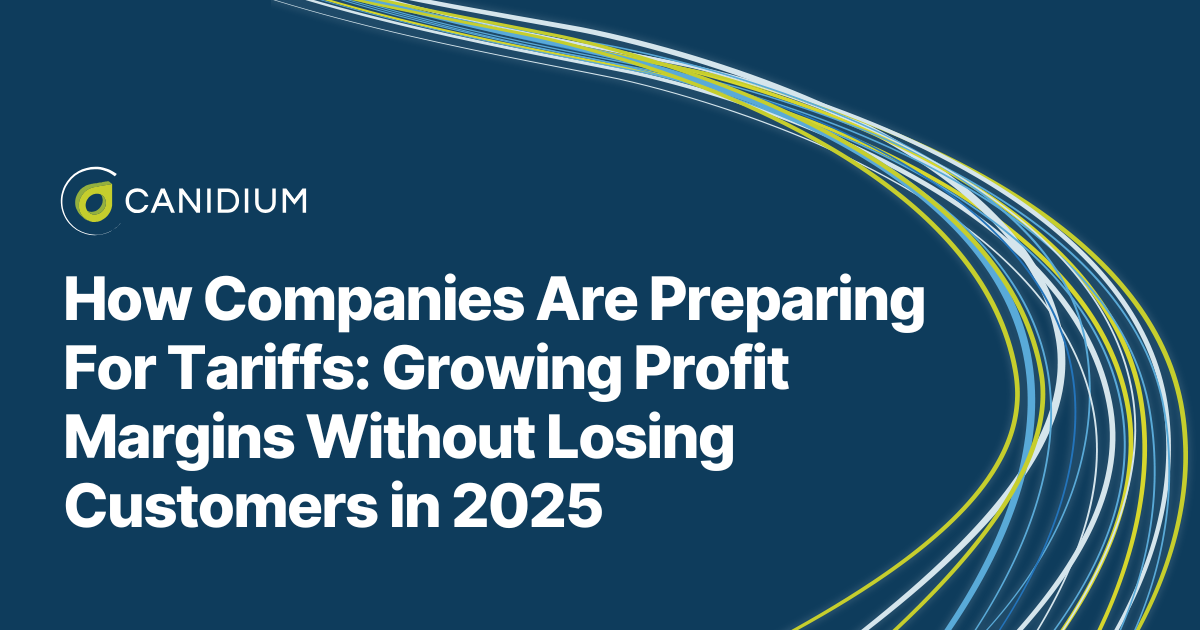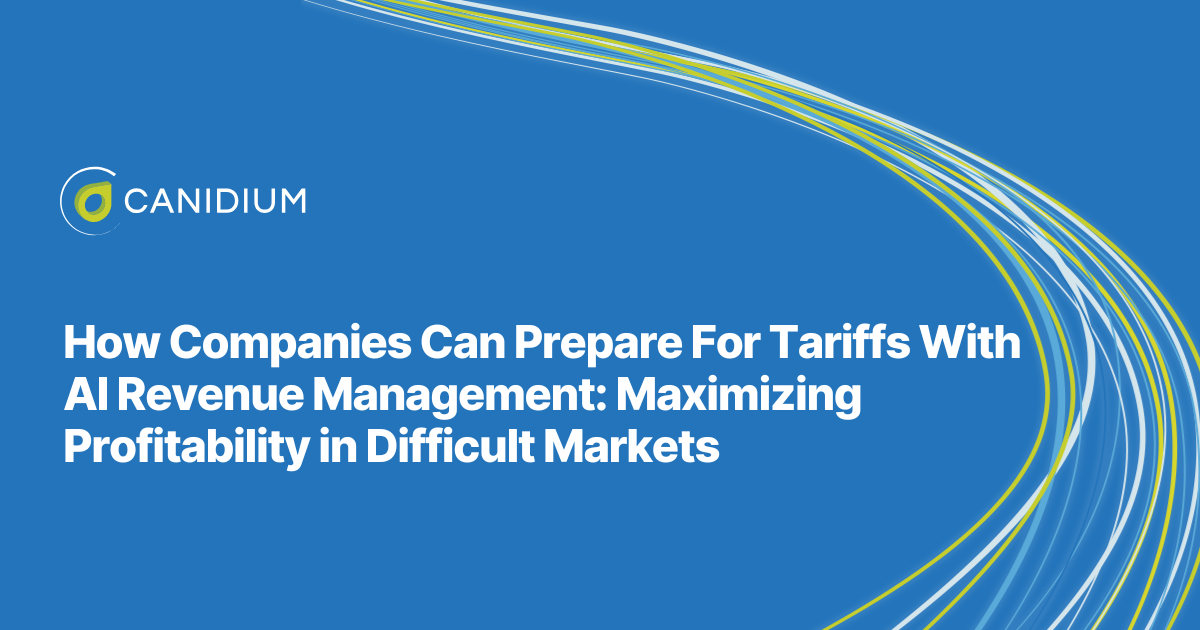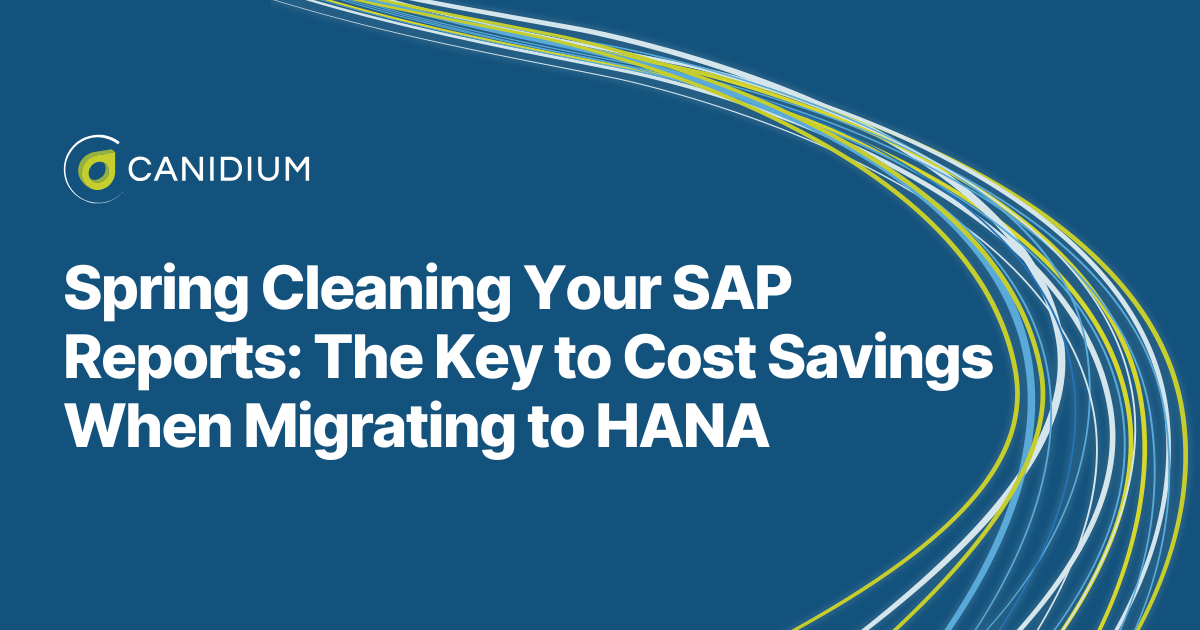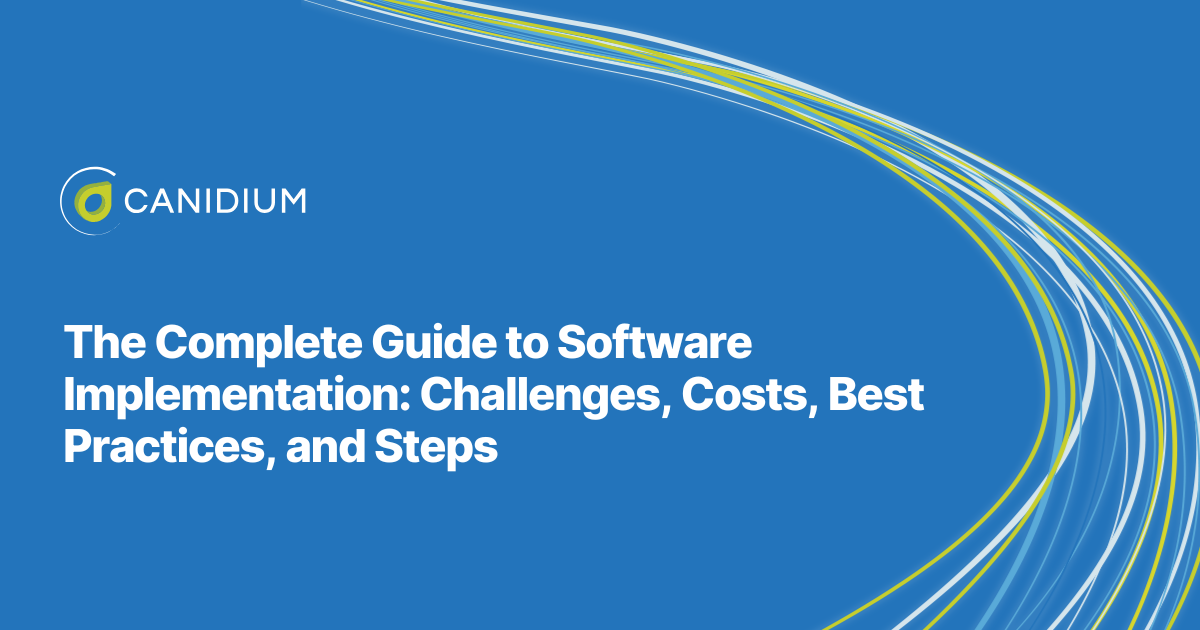Tariffs are around the corner, and companies need to prepare. One estimate suggests that February tariff proposals on China, Mexico, and Canada would shrink economic output by 0.4 percent and increase taxes by $1.1 trillion between 2025 and 2034 on a conventional basis.
Your company will, most likely, be impacted. However, that does not mean you must accept margin losses or revenue downturns. If you shore up your pricing infrastructure, prepare for changing market conditions, and set your organization up for success in a tariff economy, you can overcome these challenging conditions.
In this article, our team of pricing solution experts weigh in with pricing best practices, strategies, and approaches to successfully weather tariffs.
- What to Expect: How Tariff Costs Will Cut Into Your Bottom Line
- When Will Tariffs Take Effect and On What Materials?
- A Guide to Preparing for Tariffs: Optimizing Pricing to Overcome
What to Expect: How Tariff Costs Will Cut Into Your Bottom Line
In 2025, there's no way around the fact that most businesses will feel the impacts of tariffs to some extent. Yet the gravity of these effects will depend on your industry, supply chain, and potential demand fluctuations within your consumer base—just to name a few potential variables.
The estimates on the table are highly significant for the most directly affected. For example, one hypothetical suggests that for manufacturers with typical profit margins between 10% and 15%, the impact of a 10% tariff on critical raw materials could reduce profitability by as much as 50% to 75%.
Of course, you can't rely on early estimates to determine the potential impacts of future tariffs on your business. This is not only because the intersection of trade policies, political maneuvering, and subsequent reverberations throughout both the North American and global economy is too complex to forecast accurately but also because proposed changes have already proven volatile. Negotiations with foreign countries are still ongoing. Between tariff hikes, policy implementation delays, retaliatory tariffs, and numerous other potential fluid factors, there is no solid roadmap for trade wars. However, this doesn't mean you can't prepare. In fact, the key to remaining profitable, and even growing revenue under tariff increases, is to develop agile pricing operations. In other words, above all else, you need to become flexible and dynamic enough to correctly respond to changing market conditions rapidly.
When Will Tariffs Take Effect and On What Materials?
Tariff plans are changing rapidly. For the most accurate information, you will need to stay on top of daily news updates. However, as of the writing of this article on February 13th, 25% tariffs on aluminum and steel will take effect next month. Furthermore, Donald Trump issued a Truth Social announcement of reciprocal tariffs, meaning we will issue the same tariffs on imports as other countries impose on our goods.
These are the latest updates, but they aren't comprehensive. Before all else, research current and future tariff policies and negotiations in your specific sector. This way, you have time to prepare for price hikes with mitigation strategies. Resources like the International Trade Administration and the United States International Trade Commission can help you pinpoint the tariff proposals and policies that will impact you.
A Guide to Preparing for Tariffs: Optimizing Pricing to Overcome
Tariffs' unpredictability poses a major challenge. You will need to constantly adjust pricing to account for shifting production costs. Without an efficient system in place, you risk delayed responses, eroded profit margins, and lost market share.
Here's a deeper look into these issues and how to solve them:
Pricing Department Disruptions
Implementing an increase in tariffs can create chaos for companies operating in industries reliant on raw materials like aluminum and steel. Pricing departments, which are typically focused on long-term strategic initiatives, are forced to drop everything and scramble to adjust prices in response to tariff increases. The disruption is significant: quotes are delayed, contracts are slowed down, and special pricing agreements must be renegotiated. And, if you cannot quickly and efficiently adapt to these changes, your customers will turn to competitors who can.
The impact of tariffs is immediate if you rely on foreign suppliers. The moment they are implemented, they directly affect the cost of raw materials that companies purchase. Price increases of 10% to 25% are not uncommon, and these shifts in cost must be passed along through the supply chain. However, many companies are ill-equipped to handle these rapid changes because their pricing strategies are reliant on outdated tools such as spreadsheets or rigid ERP systems. The manual effort required to adjust prices across an entire product catalog is overwhelming, leading to inefficiencies, errors, and lost revenue.
The challenge is exacerbated when broad tariffs are implemented and then rolled back or modified. Pricing departments are left dealing with double the work—preparing for a tariff, undoing the work when it's rescinded, and starting again when a new tariff is announced. This unpredictability creates operational nightmares, especially for industries where pricing changes must be calculated across extensive product lines.
Tariffs in Practice: A Look Into The Impact on Pricing Processes
Take aluminum as an example. In the automotive sector, aluminum may make up only a small percentage of a final product, such as a rearview mirror or other replacement part for your vehicle. However, when tariffs on imports of aluminum increase, companies must determine how much of that cost is passed on to customers while maintaining a competitive edge. If this calculation is done manually, it is not only time-consuming but also prone to errors. Moreover, scaling this effort across thousands of SKUs across multiple industries—automotive, HVAC systems, tools, and electronics—only compounds the challenge.
How to Prepare Your Pricing Department for Potential Tariffs
To weather the upcoming tariffs, your pricing department needs to be more efficient. The quickest way to increase the speed and accuracy of your existing pricing team is to introduce automation. They need a tool to take care of the repetitive, time-consuming, and error-prone processes that slow down their responsiveness to market changes.
In other words, pricing software solutions are vital for companies facing these hurdles. You can use these tools to automate the pricing process, apply strategic increases proportionally based on raw material costs, and adjust prices in real-time as tariffs fluctuate. With a robust pricing platform, you can:
- Instantly update prices across all product lines without manual intervention.
- Model different tariff scenarios to anticipate and plan for changes.
- Ensure accurate pricing adjustments that reflect the true impact of tariffs.
- Maintain customer trust by avoiding inconsistent pricing and long delays.
Without a dedicated pricing solution, you risk operational bottlenecks, revenue loss, and damage to customer relationships. In industries where tariffs are a recurring challenge, efficiency in pricing adjustments is not just a luxury—it's a necessity. By investing in pricing software, companies can transform a disruptive challenge into a strategic advantage, staying agile and ahead of the competition even in the face of unpredictable tariff changes.
Calculation Efficiency Challenges
Tariffs often take effect with little warning, sometimes within just a few days of being announced. This leaves pricing departments scrambling to estimate the new costs and determine the appropriate price adjustments. The challenge is compounded when tariffs are rolled back or fluctuate, forcing companies to recalculate their pricing every time. Incorrect pricing decisions can have severe consequences—either cutting into margins if the company does not pass through enough of the cost or losing sales if prices are raised too aggressively, making the products uncompetitive.
Without software, pricing teams may take weeks to process these changes manually. Many companies rely on spreadsheets, requiring anywhere from two to four weeks to update their prices. This delay means businesses absorb higher material costs during that period without recovering the additional expense through pricing. In contrast, pricing software can complete these updates in as little as two to four days, allowing your pricing department to react almost immediately and protect your profitability.
The Risks of Outdated Pricing Methods
Companies that fail to modernize their pricing approach face several critical challenges:
- Delayed Quotes: When pricing updates take weeks, customers seeking immediate pricing may turn to competitors who can provide faster responses.
- Contract Disruptions: Special pricing agreements and contracts that need revisions can become bottlenecks, slowing down business operations.
- Lost Market Share: Customers will always choose the supplier who provides the best price and fastest response. If your company cannot keep up, competitors will win those deals.
- Operational Bottlenecks: Pricing departments stuck in reactive mode cannot focus on long-term strategic initiatives, putting the business at a disadvantage.
Solving Calculation Challenges in a Tariff Economy
Consider the fluctuating tariff threats, policies, and retaliations in just the past month. Imagine how much time and overhead wasted calculating prices for each change, many of which never came to fruition. Pricing software vastly reduces your pricing department's response time, eliminating the subsequent costs in terms of overhead, department strategy disruptions, and potential lost revenue for tariff increases that did take effect.
Exchange Rates Complications
Exchange rates fluctuate regularly, and when they do, international price lists can quickly become outdated, exacerbating the complexity of rapid tariff-based pricing calculations. If a company's pricing is based on a primary market—such as the U.S.—and then converted for other regions like Canada and Mexico, failure to track and adjust for exchange rates can result in prices that are no longer competitive or, worse, create unintended losses.
Imagine you are a distributor operating in North America. Canadian and Mexican price lists are determined by applying a currency factor to U.S. prices. Consequently, any shift in exchange rates means those lists will become misaligned with real market conditions. If you rely on manual updates or periodic reviews, you are reacting too slowly, putting yourself at a disadvantage against competitors who can adjust pricing dynamically.
The Risks of Improper and Inefficient Exchange Rate Calculations
Failing to properly manage currency exchange rate fluctuations and tariff-related pricing updates poses several risks. You may lose revenue because your prices are too low, cutting into margins and profitability. On the other hand, if your prices are too high, your products will be uncompetitive in international markets.
Additionally, the manual effort required to constantly update price lists without automation increases the risk of both human error and operational inefficiencies, leading to delays and inconsistencies that can, and likely will, hurt your market positioning. In the worst case, your company may face financial instability, supply chain disruptions, or lost market share as more agile competitors adjust their prices in real-time.
How to Automate Exchange Rate Calculations
Pricing software can differentiate between independent and dependent price lists—allowing companies to set a primary price (e.g., U.S.) and then have all dependent regional prices automatically updated based on the latest exchange rate data.
For example, if the U.S. price list serves as the independent base, pricing software can use exchange rates to calculate the appropriate prices for Canada and Mexico. When the U.S. prices are updated—whether due to cost changes, tariff impacts, or strategic adjustments—the software ensures that the changes cascade through to the dependent price lists without requiring manual intervention.
How Companies Are Preparing for Additional Tariffs in 2025
The unpredictable nature of tariff implementations and reversals, coupled with fluctuating exchange rates, makes manual pricing updates inefficient and error-prone. If your company relies on outdated tools like spreadsheets or rigid ERP systems, you will struggle to keep up with fast-moving market changes. As a consequence, you may see lost revenue, disrupted customer relationships, and reduced market share. In other words, the ability to adapt pricing strategies in real-time is no longer optional—it is a necessity for survival in a tariff-driven economy.
Without automation, businesses risk selling at non-competitive prices, whether too high or too low. Alternatively, by leveraging pricing software, companies can maintain a real-time, optimized pricing strategy that accounts for currency fluctuations and tariffs without constant manual oversight. This proactive approach not only ensures price accuracy but also strengthens market positioning by allowing businesses to respond swiftly to global economic changes.
To learn more about implementing a pricing solution like Pricefx, check out this Buyer's Guide.








